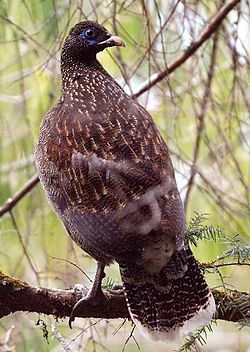| Sclater's monal | |
|---|---|
 | |
| Female (hen) | |
| Scientific classification | |
| Kingdom: | Animalia |
| Phylum: | Chordata |
| Class: | Aves |
| Order: | Galliformes |
| Family: | Phasianidae |
| Genus: | Lophophorus |
| Species: | L. sclateri |
| Binomial name | |
| Lophophorus sclateri Jerdon, 1870 | |
Sclater's monal (Lophophorus sclateri) also known as the crestless monal is a Himalayan landfowl. The name commemorates the British zoologist Philip Lutley Sclater. [3]

